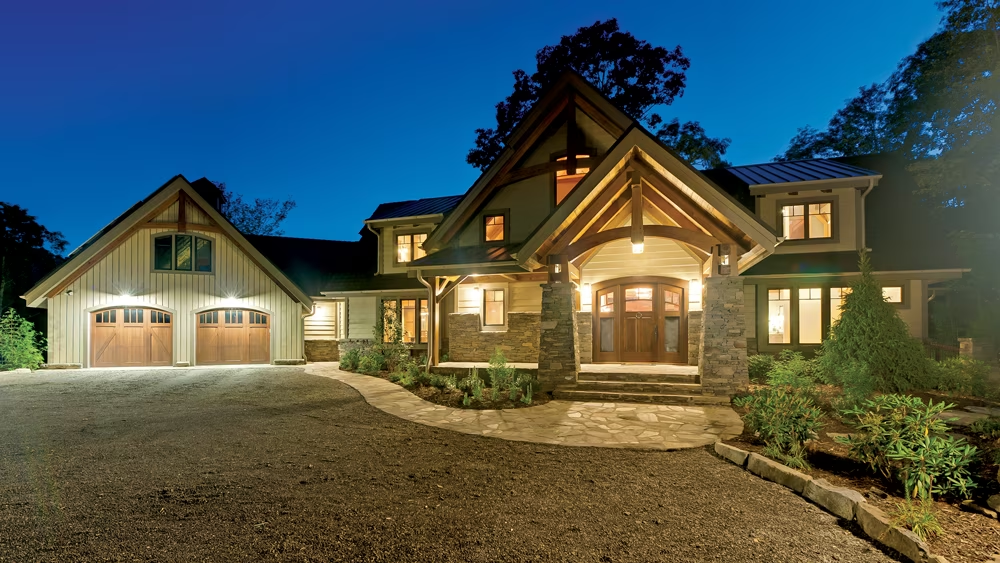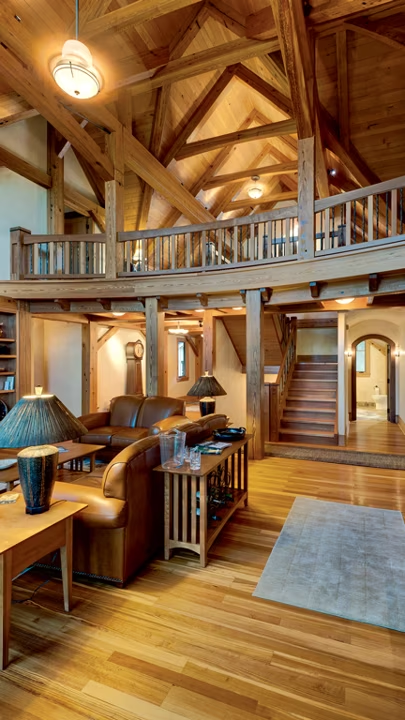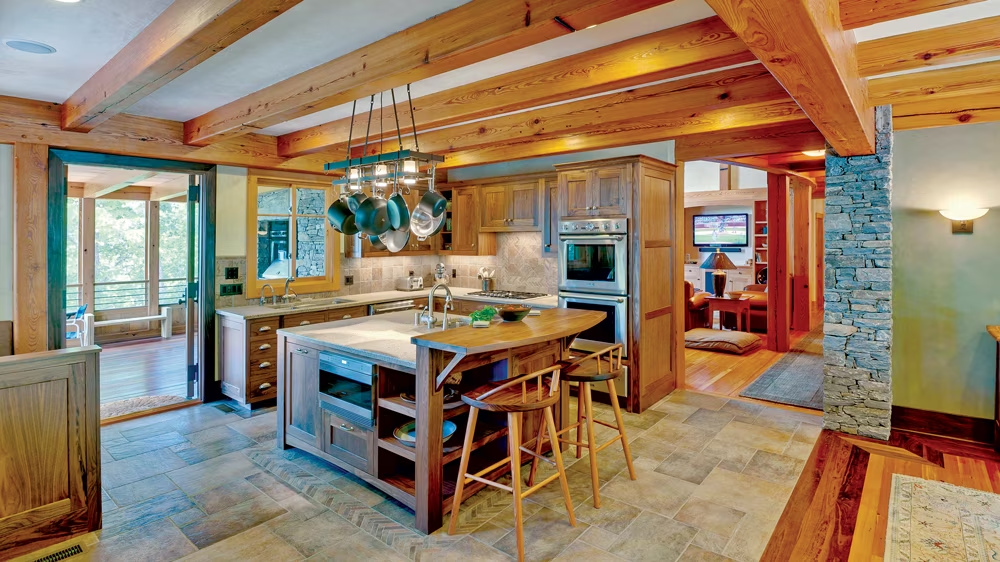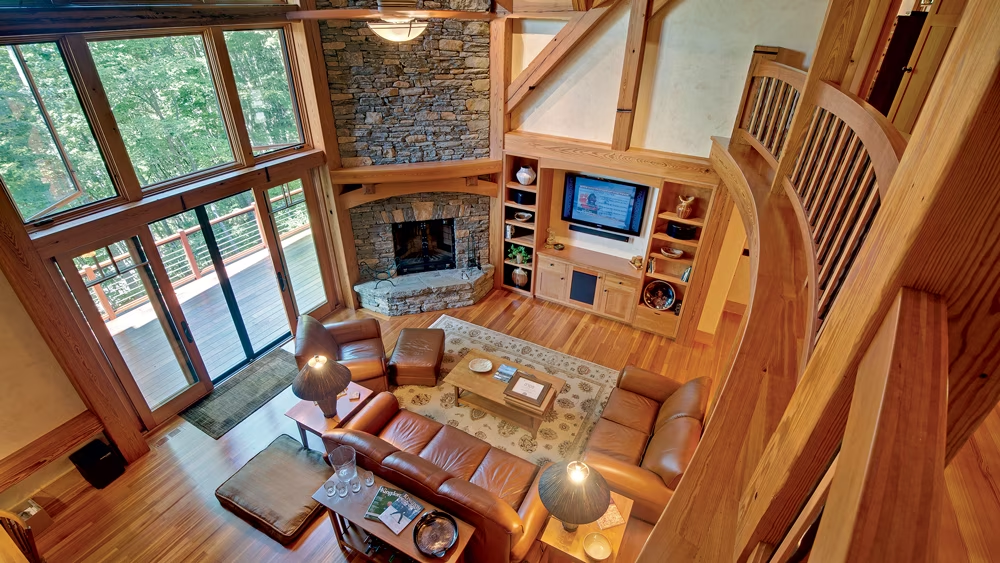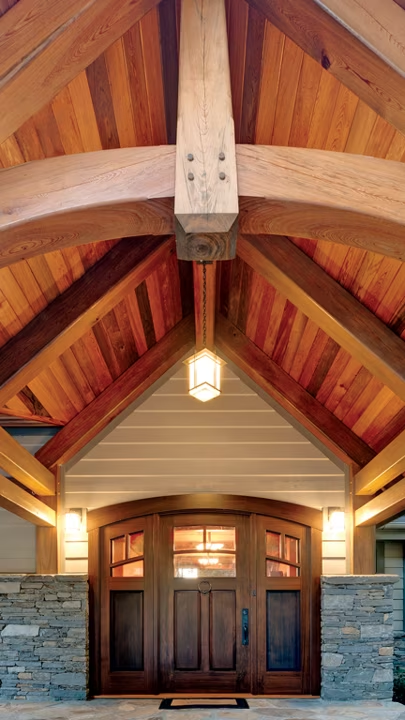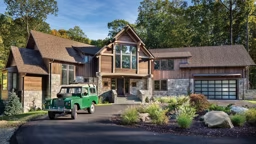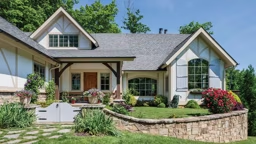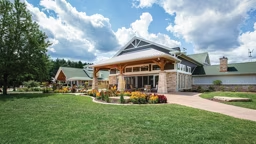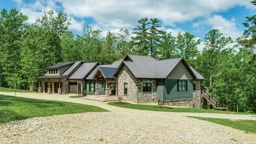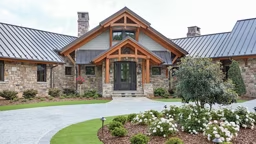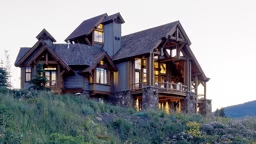Photos by Jeff Miller
Dave and Jean Walters had more than a casual interest in building green. Their new mountain retreat would not only be a comfortable gathering place for family and friends, but a showroom for their green consulting business and, ultimately, a way of demonstrating that the added costs of sustainable building could pay off financially.They built their 5,800-square-foot, five-bedroom timber frame at Balsam Mountain Preserve, a 4,400-acre private community in Sylva, N.C. with a team that included New Energy Works and general contractor Clark & Leatherwood Inc.
The Walters had a background in commercial real estate and development, where they first encountered Leadership in Energy and Environmental Design (LEED), a sustainable building program developed by the U.S. Green Building Council. After selling a business in Atlanta, they became interested in the fledgling LEED for Homes program.
“Our semi-retirement gave us enough time to become students of green building, take what we had learned from commercial building science, and get involved in this project in a pretty big way,” Dave says.
“There are many shades of green. Once a consumer gets involved in thinking green, then one has to think, ‘To what level do I want to take this?’”
They took it all the way. Their home was one of the first in western North Carolina to be certified as LEED Gold, while also winning gold accreditation in the NC HealthyBuilt Home program.
An emphasis on local materials
Using reclaimed, recycled and locally sourced materials is one of the cornerstones of green building. To the Walters, this meant fabricating the structural timber frame from reclaimed heart pine that had originally come from the Blue Ridge Mountains.
With the help of New Energy Works, which designed and built the frame along with much of the interior, they located enough material in a 19th century International Harvester factory near Chicago. The lumber was shipped to New Energy Works sister company Pioneer Millworks for milling.
Flooring also is reclaimed heart pine. The tongue-and-groove ceilings are reclaimed Douglas fir, and baseboards throughout the house were once high school bleachers.
“The amount of handcrafted work in this house is high, even for a timber-frame home,” says Jonathan Orpin, president and Founder of New Energy Works.
All the wood on the outside of the house, including trim, siding and post-and-beam elements, is reclaimed “sinker cypress,” retrieved from two Florida river bottoms. The trees had been cut as early as 1880.
Where new wood was used, the Walters made sure it was certified by the Forest Stewardship Council, meaning it had been produced with sustainable harvesting practices.
Green-building guidelines also promote the use of locally produced and recycled products, and the Walters have some of each. Stone came from two sites within 30 miles of the building site, and the wood-plastic composite Eco-Shake roof shingles are made with recycled plastic sourced from the disposable diaper industry.
Energy-saving mechanical systems
Although much of North Carolina has a relatively mild climate, the Walters’ house is at an elevation of about 4,300 feet. A tight, well insulated building envelope and an efficient heating system were important considerations.
The frame is wrapped in structural insulated panels (SIPs) for air-tightness and effective insulation, 6 in. thick on the walls and 10 in. thick in the roof for R-values of 24 and 39 respectively.
The couple settled on a ground-source heat pump, which collects latent heat in the earth via three vertical bore holes, each between 360 and 410 feet deep. Heat is distributed in two ways: a radiant-floor system and forced-air ducts. Although air conditioning wasn’t considered crucial, it’s available.
“The forced air that we have gives us a little kick start when we get up there and it’s 10 degrees and the wind is blowing 50 miles an hour,” Dave says. In-wall gas heaters in the master bedroom and a downstairs guest suite also help deliver quick heat when it’s needed.
In keeping with energy conservation goals, hot water is provided by roof-mounted solar thermal collectors, which can be augmented with the geothermal system in the winter when the sun alone isn’t enough to produce all the domestic hot water the family needs.
Photovoltaic panels on the south-facing garage roof provide electricity. When the grid-tied, 5.4 kW system produces a surplus of electricity, it’s fed into the utility grid. When demand outstrips what the panels can produce, utility power makes up the difference.
Calculating the payback
Dave Walters estimates that adding all of the green features to the house added about 20 percent to the cost of the building. But he expects to earn that back through savings that the energy conservation measures will deliver.
“This is not a small home,” Orpin says, “yet the owners were really striving to minimize their ecological impact. They went to great extremes to do that.”
One of the questions is whether there are savings in green building once the up-front costs are absorbed. “Will there be an economic payoff,” Dave says, “and if so how do you measure it?” The Walters are collecting data on how the house is performing, and in time hope to be able to show their investments have paid off.
In the meantime, they have the other benefits of a green home: healthy indoor air, the satisfaction of seeing indigenous materials all around them and lower maintenance costs.
Home Details
Square Footage: 5,800
Architect: New Energy Works
Builder: Clark & Leatherwood
Timber Provider: Pioneer Mill Works




